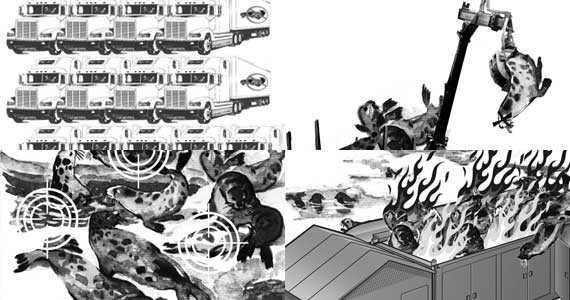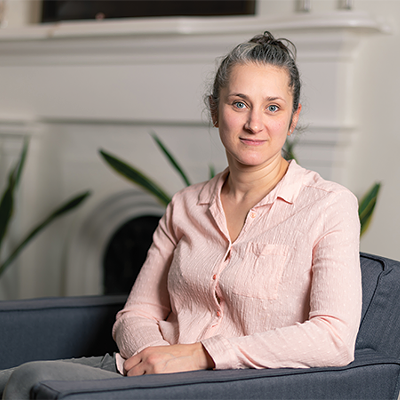A massive seal slaughter on Sable Island would involve bringing in mobile crematoriums and modified tree-harvesting equipment, and would cost upwards of $35 million, according to a study commissioned by Fisheries and Oceans Canada. The 2009 study, obtained through an Access to Information request, examined the costs and logistics associated with "managing" the grey seal population on the fragile island, a whelping ground for the world's largest grey seal colony.
For years, the fishing industry has been lobbying the DFO for a seal cull on the island, arguing that seals, not humans, are to blame for eating too many cod. Under growing pressure from the fishing lobby, the DFO commissioned the study and asked CBCL Ltd., a Halifax-based engineering firm, to consider two options. One was to explore what it would take to execute a slaughter of 100,000 seals the first year (50,000 pups, 30,000 females and 20,000 males), and 30,000 in each of four subsequent years. The second option involved implementing a contraceptive vaccine program targeting 16,000 female grey seals each year for five years.
According to the study, the execution of either option would take place between December and early February---when the beaches and dunes are covered with nursing mothers and their babies. The study concluded that the logistics, resource requirements and costs of executing the first option would be "substantial," when compared to an immunization program.
The study details what would be required to kill, lift and move tens of thousands of seal carcasses over a 25-day period. Adult seals would be killed with rifles and the pups with either rifle or by clubbing. To achieve the goal of 100,000 dead seals in 25 days, 10 seals would have to be killed every minute. "At this production rate, a tandem dump truck would be filled with seals approximately every 10 minutes...seven hours a day for 25 days," says the study.
Thirty modified tree forwarders with boxes and rubberized grips would be required to load all the carcasses from the "work zones" to one of the 20 or so mobile crematoriums where they would be "thermally treated," meaning incinerated. If the carcasses were not incinerated then the onset of rot and disease would be fast, resulting in biological hazards and health and safety issues for the workers. The study explained that if incineration did not occur before stockpiling and storage, then the carcasses would have to be transported daily off the island---slung from shore by helicopter to a supply vessel---and brought to the "shore base" for disposal. CBCL identified the Mulgrave Marine Terminal on the Strait of Canso as a base, able to accommodate offshore supply vessels, ocean-going tugs and barges, fixed and mobile cranes and regular off-loading capability for the tractor-trailer support the operation would require.
According to the study, 100,000 intact carcasses would weigh roughly 15,000 tonnes and would require 500 trips by tractor trailer from the marine terminal to a disposal facility. The study notes several problems with this scenario, one being that the carcasses would likely freeze inside the containers, making disposal difficult and, secondly, that it's currently not legal to dump 15,000 tonnes of dead seals into a Nova Scotia landfill.
For these reasons incineration on Sable Island is the study's preferred choice. Units called "Air Curtain Burners," designed to burn wood waste with a special mechanism to control smoke, would be used for incinerating the carcasses.
According to a DFO spokesperson, any decision to implement the study's recommendations would be made by the minister, Gail Shea. In January Shea announced a "total allowable catch" of 39,000 grey seals from Sable Island. And, with the value of seal pelts tanking and the European Union slamming its doors on seal products, Shea also visited China to promote the sale of seal meat, pelts and penises.
This is where the picture starts to get murky. Just last week the federal and provincial governments announced that Sable Island will be designated a national park, a decision welcomed by environmentalists because it will raise the level of protection for the island's unique biodiversity and extremely fragile sand dune ecosystems. But this protection does not apply to seals. According to DFO's seal expert Don Bowen, a park designation would not prohibit a seal cull on the island. At a public meeting earlier this year, Bowen said "whether a hunt occurs or not is not a scientific decision, but a political or economic one."
















